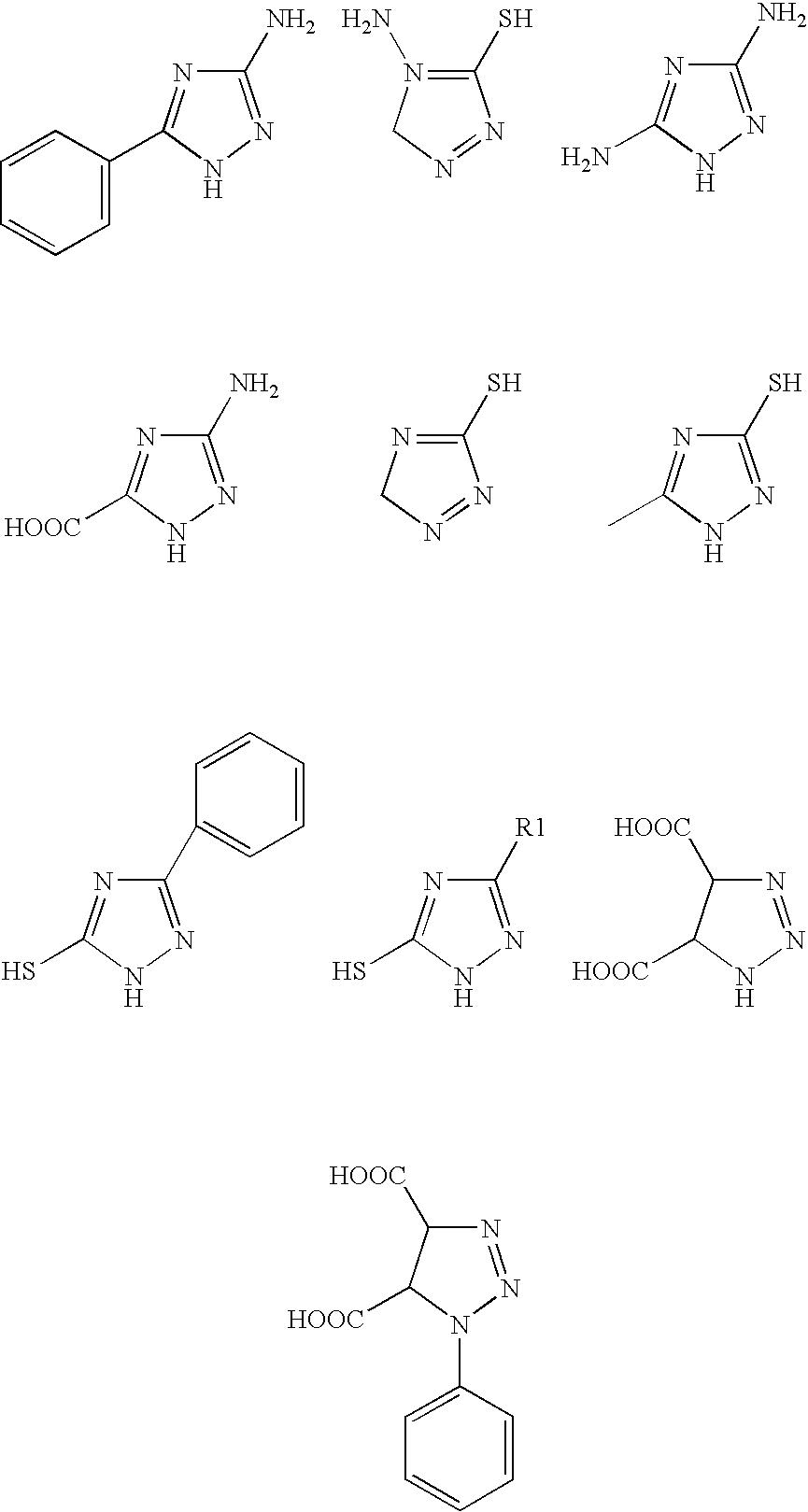Semiconductor encapsulant of epoxy resin, phenolic resin and triazole compound
a technology of phenolic resin and epoxy resin, which is applied in the field of epoxy resin composition, can solve the problems of reducing reliability, affecting the performance of semiconductor devices, and affecting the reliability of semiconductor devices, and achieves good soldering resistan
- Summary
- Abstract
- Description
- Claims
- Application Information
AI Technical Summary
Benefits of technology
Problems solved by technology
Method used
Image
Examples
experimental example 1
[0041]An epoxy resin represented by formula (2) (softening point: 58° C., epoxy equivalent: 272; hereinafter, referred to as “Epoxy resin 1”): 8.2 parts by weight
[0042]
[0043]A phenolic resin represented by formula (3) (softening point: 107 degrees centigrade, hydroxy equivalent: 200; hereinafter, referred to as “Phenolicresin1”): 6.0 parts by weight
[0044]
[0045]An equivalent ratio of epoxy groups in the total epoxy resins to phenolic hydroxy groups in the total phenolic resins is calculated as 1.0.
[0046]1,8-Diazabicyclo[5.4.0]undecene-7 (hereinafter, referred to as “DBU”): 0.2 parts by weight.
[0047]Spherical fused silica (Micron Co., Ltd., average particle size: 28 μm): 85.0 parts by weight.
[0048]1,2,4-Triazole-5-thiol represented by formula (4) (Reagent Grade): 0.1 parts by weight
[0049]
[0050]Carnauba wax: 0.2 parts by weight
[0051]Carbon black: 0.3 parts by weight.
[0052]These components were mixed using a mixer, kneaded using two rolls with surface temperature of 90 degrees centigrad...
experimental examples 2 to 15
[0056]According to blending rates in Tables 1 and 2, epoxy resin compositions were prepared and evaluated as described in Experimental Example 1. The results are shown in Tables 1 and 2. Specific epoxy resins and phenolic resins used are shown in Table 3. Triazole compounds used in the experiments other than Experimental Example 1 are as follows.
[0057]3-Amino-1,2,4-triazole-5-thiol represented by formula (5) (Reagent grade)
[0058]
[0059]3,5-Dimercapto-1,2,4-triazole represented by formula (6) (Reagent grade)
[0060]
[0061]3-Hydroxy-1,2,4-triazole-5-thiol represented by formula (7) (Reagent grade)
[0062]
[0063]5-Mercapto-1,2,4-triazole-3-methanol represented by formula (8) (Reagent grade)
[0064]
[0065]2-(4′-Morpholinodithio)benzothiazole represented by formula (9) (Kawaguchi Chemical Industry Co,. Ltd.).
[0066]
[0067]
TABLE 1Experimental Examples123456789101112Epoxy resin 18.28.28.28.28.27.16.5Epoxy resin 27.47.47.47.47.4Phenolic resin 16.06.06.06.06.05.24.8Phenolic resin 26.86.86.86.86.8(Equiva...
PUM
| Property | Measurement | Unit |
|---|---|---|
| temperature | aaaaa | aaaaa |
| surface temperature | aaaaa | aaaaa |
| surface temperature | aaaaa | aaaaa |
Abstract
Description
Claims
Application Information
 Login to View More
Login to View More - R&D
- Intellectual Property
- Life Sciences
- Materials
- Tech Scout
- Unparalleled Data Quality
- Higher Quality Content
- 60% Fewer Hallucinations
Browse by: Latest US Patents, China's latest patents, Technical Efficacy Thesaurus, Application Domain, Technology Topic, Popular Technical Reports.
© 2025 PatSnap. All rights reserved.Legal|Privacy policy|Modern Slavery Act Transparency Statement|Sitemap|About US| Contact US: help@patsnap.com



